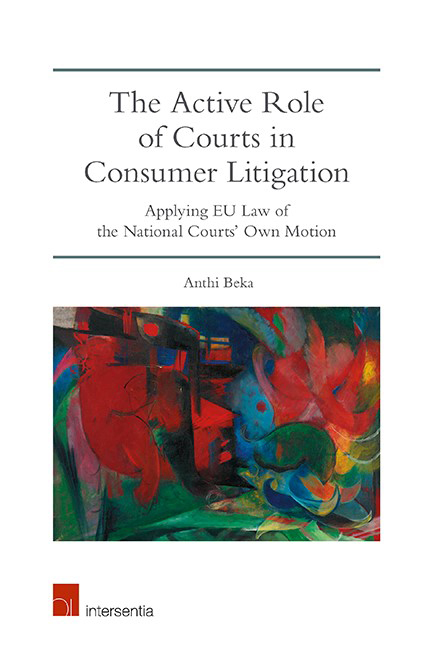Book contents
- Frontmatter
- Dedication
- Foreword by Professor Elise Poillot
- Introduction by Judge Etienne Rigal
- Acknowledgments
- Contents
- List of Cases
- List of Abbreviations
- Introduction
- PART I THE DOCTRINE OF THE ACTIVE CONSUMER COURT IN CONTEXT
- PART II THE EMERGENCE AND DISTINCTIVE FEATURES OF THE ACTIVE CONSUMER COURT DOCTRINE
- Final Conclusions: Changing the Narrative and Moving Forward
- Bibliography
- Index
- About the Author
PART II - THE EMERGENCE AND DISTINCTIVE FEATURES OF THE ACTIVE CONSUMER COURT DOCTRINE
Published online by Cambridge University Press: 31 January 2019
- Frontmatter
- Dedication
- Foreword by Professor Elise Poillot
- Introduction by Judge Etienne Rigal
- Acknowledgments
- Contents
- List of Cases
- List of Abbreviations
- Introduction
- PART I THE DOCTRINE OF THE ACTIVE CONSUMER COURT IN CONTEXT
- PART II THE EMERGENCE AND DISTINCTIVE FEATURES OF THE ACTIVE CONSUMER COURT DOCTRINE
- Final Conclusions: Changing the Narrative and Moving Forward
- Bibliography
- Index
- About the Author
Summary
The purpose of this part is to examine the role of the case law of the Court in the strengthening of individual consumer procedural protection. The development of a specific line of case law on consumer procedural protection did not have its basis in a procedural legislative instrument. The existing legislation on consumer law does not cover the course of domestic litigation before national courts. The“ springboard” for the creation of the doctrine has been Article 7(1) of the Unfair Contract Terms Directive, which requires that Member States ensure that“ adequate and effective means exist to prevent the continued use of unfair terms.” This provision, as Peter Rott puts it,“ codifies” effectiveness. The protective purpose of the rules of substantive consumer law led to the inference of their procedural implications. In practice, the reading of the Union consumer protection legislation in light of the principle of effectiveness resulted in a conceptual reappraisal of the standards of judicial protection applicable in consumer litigation.
This conceptual reappraisal is based upon two premises. The first one is the qualification of the mandatory rules of consumer protection as an expression of European public interest with the result that those procedural rules should be elevated to the same procedural ranking as domestic rules of public policy. This premise alone would not be sufficient to establish the distinctiveness of the role of the courts in the consumer procedural litigation framework. It is shared by other internal market rules that have been characterized as expressions of European public policy, namely the rules of competition law. The second premise, which is distinctive in consumer litigation, is the presumption set at the Union level of the existence of a situation of procedural imbalance, a procedural expression of the underlying structural weakness of one of the parties compared to its sophisticated counterparty.
While the general rule on the application of Union law by the courts of their own motion does not require any change in the respective role of the courts and the parties, provided that the parties have a genuine opportunity to raise the Union law argument, the position is inverted at the level of Union consumer law.
- Type
- Chapter
- Information
- The Active Role of Courts in Consumer LitigationApplying EU Law of the National Courts’ Own Motion, pp. 121 - 128Publisher: IntersentiaPrint publication year: 2018



